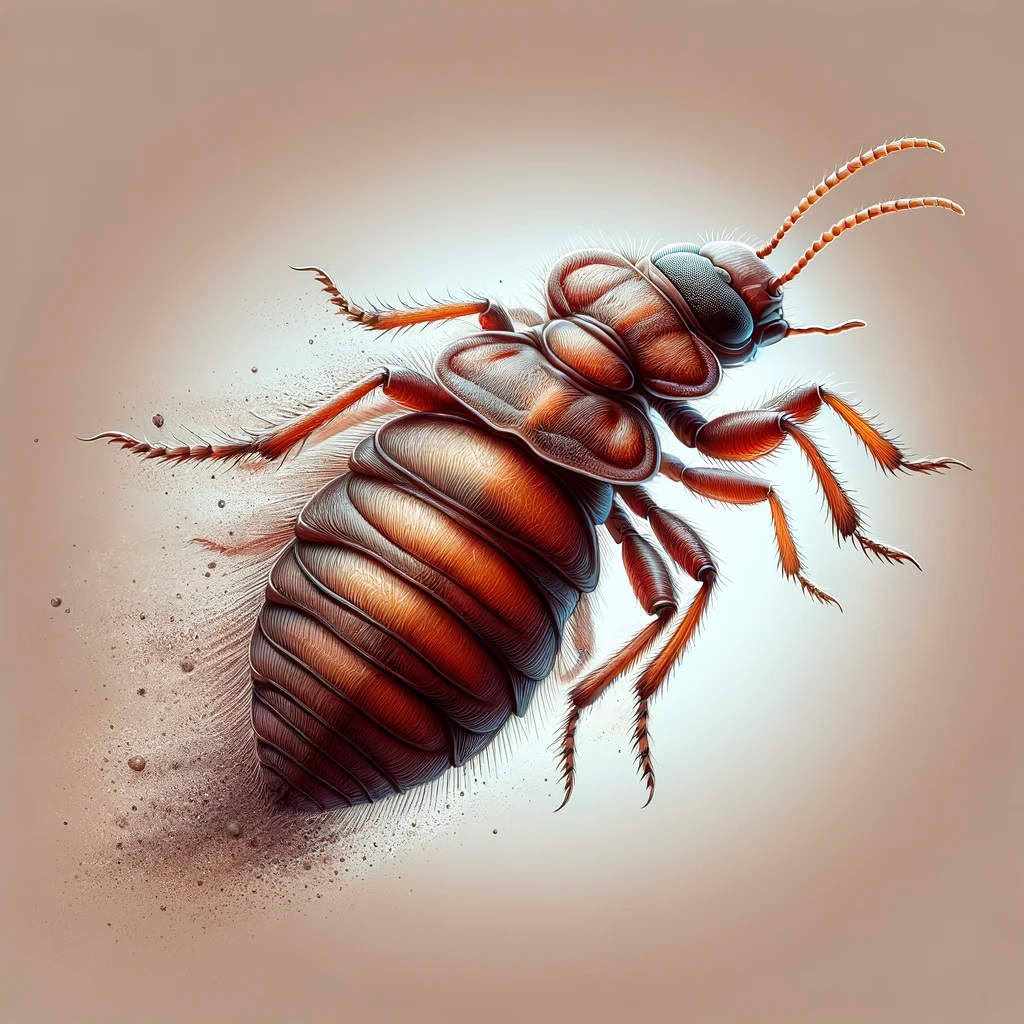Can Bed Bugs Jump on You
Lying in bed, have you ever felt a sudden itch and wondered, “Can
Understanding Bed Bugs
Bed bugs are small, nocturnal insects, about the size of an apple seed, that thrive on human blood. They’re reddish-brown, oval-shaped, and can be quite the nuisance in homes. These bugs are most active at night, which is why bed bug bites often occur while we’re asleep. They prefer environments where they can easily access their food source — us! This means they’re commonly found in mattresses, bed frames, and other areas near where people sleep. Despite their name,
You might be interested in: Do Bed Bugs Have Wings?
The Myth of Jumping Bed Bugs
The myth that
Unlike fleas, which have a well-known reputation for their jumping prowess,
This misconception might stem from
Furthermore, the idea that
It’s also worth noting that
- 100% Kill Efficacy Bedbugs, Mites, Eggs
- Lasting Protection
- USDA BIO-certified
- Plant Extract Based & Non-Toxic
- Child & Pet Safe
- Bedbug Detection and Protection
- Effective, Heav Duty, Versatile Design
- Use under bed posts and furniture legs
- Bed bugs climb in but cannot climb out
How Bed Bugs Move and Spread
Understanding how
- Crawling Abilities:
Bed bugs are primarily crawlers. They have a knack for moving quickly across various surfaces. This includes walls, floors, ceilings, and even furniture. Their small size and flat bodies allow them to squeeze into tiny spaces and cracks, often going unnoticed. - Hitchhiking: The most common way
bed bugs spread is through hitchhiking on personal belongings. They can latch onto luggage, bags, clothing, and other items that are moved from one place to another. This method is particularly problematic for hotels, hostels, and homes where travelers stay, as it allowsbed bugs to spread over long distances. - Second-Hand Furniture: Purchasing or acquiring used furniture can unintentionally introduce
bed bugs into a home. These pests can reside within couches, chairs, mattresses, and other furnishings, remaining hidden until they find a human host to feed on. - Neighboring Infestations: In apartment complexes and shared living spaces,
bed bugs can move between units through shared walls, ducts, and voids in the building structure. This inter-unit movement is a significant challenge in multi-unit buildings. - Passive Dispersal:
Bed bugs don’t just rely on human movement. They can also spread within a building by exploiting structural deficiencies, such as cracks in walls and loose baseboards, allowing them to access neighboring rooms or apartments. - Breeding and Population Growth: Once
bed bugs establish themselves in a new area, their population can grow rapidly. Femalebed bugs lay hundreds of eggs in their lifetime, and in suitable conditions, these eggs hatch within a week, rapidly increasing the population and the extent of an infestation. - Lack of Effective Detection:
Bed bugs are notoriously difficult to detect due to their elusive nature and tendency to hide during the day. This makes early detection challenging, allowing them to spread and multiply unnoticed.

Protecting Yourself from Bed Bugs
Preventing a bed bug infestation is easier than dealing with one. Regularly inspect your living spaces, especially after trips or bringing in second-hand furniture. Using a protective cover for your mattress and box spring can also deter these pests. Additionally, maintaining a clean and clutter-free environment makes it harder for
Dealing with a Bed Bug Infestation
If you suspect a bed bug infestation, it’s important to act fast. Start by thoroughly cleaning your bedding, curtains, and clothing in hot water. Vacuum your bed and surrounding areas regularly. Seal any cracks in the wall or flooring where
- Kills Bed Bugs and Fleas
- Inhibits Reinfestation Up to 7 Months
- Use indoors in enclosed spaces
- Non Toxic
Dispelling the Jumping Myth: Can Bed Bugs Really Leap onto You?
The fear that
You might be interested in: Do Bed Bugs Jump? Separating Fact from Fiction







